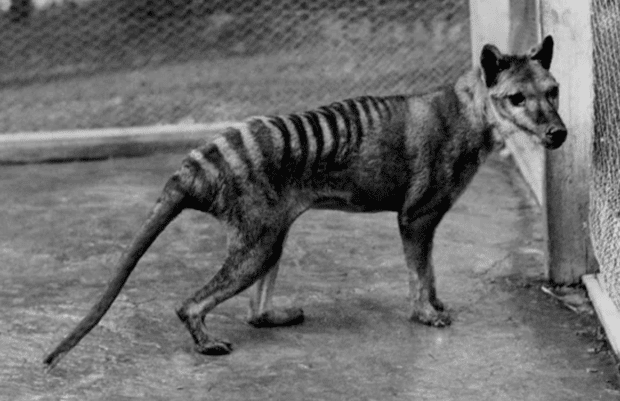It’s been nearly 100 years since the Tasmanian tiger’s extinction — but the marsupial may live once again. Earlier this year, scientists at The University of Melbourne established a research lab dedicated to developing technologies that could bring back the carnivorous marsupial, officially known as a thylacine, that died out in the 1930s, and reintroduce it to its native Australian island of Tasmania.
Now, with a $5 million donation from earlier this year, and a new partnership with a Texas-based genetic engineering company called Colossal Biosciences, which is also working on a project to recreate the woolly mammoth in an altered form and return it to the Arctic tundra, scientists are harnessing advances in genetics, ancient DNA retrieval, and artificial reproduction to bring back the animal to the land of the living.
The project involves several complicated steps, but scientists say the marsupial can be recreated using stem cells and gene editing reproductive technology. The team plans to take stem cells from a living marsupial species with similar DNA, and turn them into “thylacine” cells to “bring back” the extinct species – or a very close approximation of it – using gene-editing technology.
“We are using the very latest DNA engineering technologies and developing new tech for marsupial stem cell derivation and assisted reproductive techniques…We also have a huge team of scientists working on solving and problems we encounter along the way,” Professor Andrew Pask, who is leading the research at the University of Melbourne, told CBS News.New marsupial-specific assisted reproductive technologies will be needed to use the stem cells to make an embryo, which will require building artificial wombs.
“I think we are looking at a decade or so to get the animal back. Then, for most re-wilding efforts of this scope, you would want to very closely study the animal in large captive areas on Tasmania to make sure it is fitting back into the ecosystem before releasing them across the whole island. This would take potentially another 10 years to be sure we are doing this as carefully as possible,” Pask said.
Pask says the implications of the technology his team is developing are huge for preserving the species that are left, as well as for underpinning current de-extinction projects.
“The ability to gene edit marsupials opens up possibilities for saving northern quolls from extinction, the ability to generate marsupial stem cells and then whole animals enables us to think about restoring marsupial species lost in bushfires to their original habitats once the vegetation has regenerated,” Pask said. (CBS NEWS)








